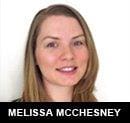Earlier this week we released Part One of this series which discusses the impact of the ACA on tax filing for people who had health insurance for all of 2014. In Part Two, we provide an overview of the impact for people who did not have health insurance for some or all of 2014.
The ACA requires all U.S. Citizens and lawfully residing residents to have qualifying health coverage throughout the year, also known as the “individual mandate.” If an individual did not have coverage throughout 2014 they must either qualify for an exemption from the requirement or pay a fee when filing their taxes.
I Didn’t Have Insurance, Can I Get an Exemption?
There are a number of different exemptions to the requirement to have health insurance. For example:
- you were without coverage for only 1 or 2 consecutive months;
- the coverage available to you through a job or individual plan would have cost more than 8 percent of your income; or
- your income is low enough you aren’t required to file an income tax return.
You may also be eligible for an exemption if you faced a hardship in 2014. For example if you:
- had medical expenses that resulted in substantial debt;
- experienced domestic violence;
- had substantial property damage from a man-made or natural disaster; or
- you were determined ineligible for Medicaid because your state didn’t expand eligibility for Medicaid under the ACA (see more about this exemption here)
Certain exemptions can be granted only through a request to the Marketplace, others can only be claimed on a tax return, and some can be claimed either way (on a tax return or granted by the Marketplace). Taxpayers will use Form 8965, Health Coverage Exemptions, to claim an exemption or report an exemption granted by the Marketplace. The instructions for Form 8965 include a detailed chart which shows where to obtain each allowable exemption. The full lists of exemptions and hardship exemptions are also available on Healthcare.gov.
I don’t qualify for an exemption. Now what?
If you did not have health insurance in 2014 and do not qualify for an exemption, you will be required to pay a fine on your taxes. Individuals will be required to calculate their fee using a worksheet located in the Instructions to Form 8965..
If you didn’t have coverage in 2014, you’ll pay the higher of these two amounts:
- 1 percent of your yearly household income above the tax filing threshold ($10,150 for an individual). The maximum penalty is capped at the national average premium for a bronze plan which was $204/month per individual in 2014. No family will have to pay this for more than five individuals.
or
- $95 per adult ($47.50 per child; family maximum $285)
These fine amounts will increase significantly over the next two years, reaching fully-phased-in levels in the 2016 tax year. See my recent blog post for the amounts for the 2015 tax year.
Where to Get Help
This is meant only as a high-level overview of the ACA’s impact on tax filing. For more information about how health care will impact taxes go to www.Healthcare.gov/taxes or www.irs.gov/Affordable-Care-Act. The Center on Budget and Policy Priorities also developed the “The Tax Preparer’s Guide to the Affordable Care Act” which provides detailed information on the ACA impact to taxes.
To learn more about free tax assistance and filing options available for low and moderate income taxpayers go to www.IRS.gov/freefile and www.IRS.gov/VITA.
